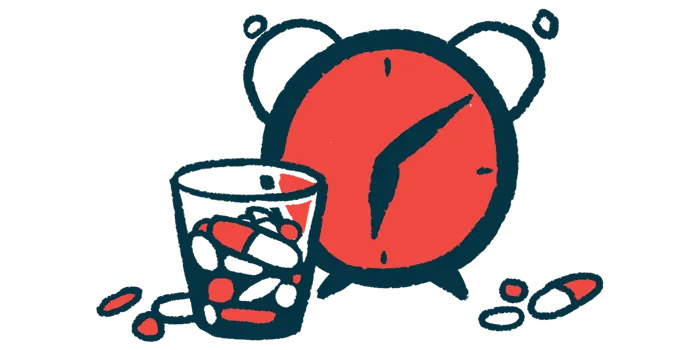
Demand Treatment Delays for HAE Attacks Lead to Increased Severity and Duration: Study Reveals Shocking Findings!
2025-01-09
Author: Mei
Introduction
Delaying on-demand treatment for hereditary angioedema (HAE) swelling attacks not only escalates the severity and duration of the attacks but also causes symptoms to potentially spread to other areas of the body. This alarming conclusion comes from a recent study published in the Annals of Allergy, Asthma, and Immunology, which discovered that approximately 79% of HAE patients experience treatment-related anxiety, with a direct correlation to the delays in receiving necessary care.
Call for Improved Management
“Suboptimal management of attacks intensifies the burden of HAE, emphasizing the urgent need for improved treatment options and the removal of barriers associated with on-demand administration,” the researchers noted. HAE is characterized by sudden swelling episodes, frequently occurring in the deeper layers of skin or mucosal membranes. Experts recommend that these attacks be treated as quickly as possible to minimize morbidity and prevent serious complications or even death.
Study and Findings
Despite these guidelines, many patients with HAE frequently postpone or completely forgo treatment. Researchers have pointed out a significant information gap regarding the reasons behind these decisions, as well as the far-reaching consequences of delaying treatment in real-world scenarios.
In their study, researchers assessed survey data from 94 HAE patients (80 adults and 14 adolescents) who had utilized an approved on-demand therapy for at least one attack in the prior three months. They also examined data from an additional 20 adults who suffered from untreated attacks during the same period.
Treatment Methods Used
The principal on-demand treatment for adults in the study was icatibant (marketed as Firazyr), with generics also available. For adolescents, C1 inhibitor therapies were typically employed. Alarmingly, the average time taken to treat a recent attack was 3.8 hours, and only 17 adults and one adolescent received prompt treatment within one hour.
Patients' Perceptions vs Reality
Interestingly, despite 67% of respondents believing they treated their attack promptly, only 25.4% actually received care in under an hour. Those reporting early treatment still had an average delay of 2.9 hours.
For the 32.9% of participants who delayed treatment, 90.3% waited two or more hours, indicating a pattern of hesitation that can have serious health consequences. The study found a stark contrast between patients' perceptions of timely treatment and the reality of their experiences.
Length of Attacks
As treatment delays lengthened, so too did the duration of the attacks. Those treated within an hour had an average attack length of just 0.7 days, while patients who waited eight hours or more faced attacks lasting an average of 2.7 days. Concerningly, over a third of patients experiencing mild attacks who were treated quickly reported a worsening in their condition.
Spread of Symptoms
Furthermore, a significant number of adolescents (42.8%) and adults (27.5%) reported that their attacks spread from the initial site when treatment was delayed. Those who managed to treat their swelling within an hour had a reduced likelihood of additional symptoms spreading.
Anxiety and Delays
Anxiety related to on-demand treatment was another contributing factor to delays. The average time to treatment was 2.4 hours among respondents who were not anxious, whereas individuals with extreme anxiety waited much longer, averaging 5.4 hours. Adults primarily voiced concerns about treatment availability and costs, while adolescents expressed fears related to therapy administration and its efficacy.
Untreated Attacks
The struggle with untreated attacks is also troubling; the untreated group reported an average attack duration of 2.3 days, with around 50% of those describing their last attack as mild later noting it escalated to moderate or severe. Many patients cited reasons for not utilizing on-demand treatment, including conserving medication for more severe episodes, expecting the attack to remain mild, and uncertainty regarding the legitimacy of their attacks.
Conclusion
The findings from this study starkly suggest that the management of on-demand treatment for HAE attacks is far from optimal, significantly exacerbating the burden of this chronic condition. This highlights the pressing demand for more effective treatment solutions, better education for patients on managing their condition, and the urgent dismantling of barriers that prevent timely access to necessary therapies.
 Brasil (PT)
Brasil (PT)
 Canada (EN)
Canada (EN)
 Chile (ES)
Chile (ES)
 Česko (CS)
Česko (CS)
 대한민국 (KO)
대한민국 (KO)
 España (ES)
España (ES)
 France (FR)
France (FR)
 Hong Kong (EN)
Hong Kong (EN)
 Italia (IT)
Italia (IT)
 日本 (JA)
日本 (JA)
 Magyarország (HU)
Magyarország (HU)
 Norge (NO)
Norge (NO)
 Polska (PL)
Polska (PL)
 Schweiz (DE)
Schweiz (DE)
 Singapore (EN)
Singapore (EN)
 Sverige (SV)
Sverige (SV)
 Suomi (FI)
Suomi (FI)
 Türkiye (TR)
Türkiye (TR)
 الإمارات العربية المتحدة (AR)
الإمارات العربية المتحدة (AR)